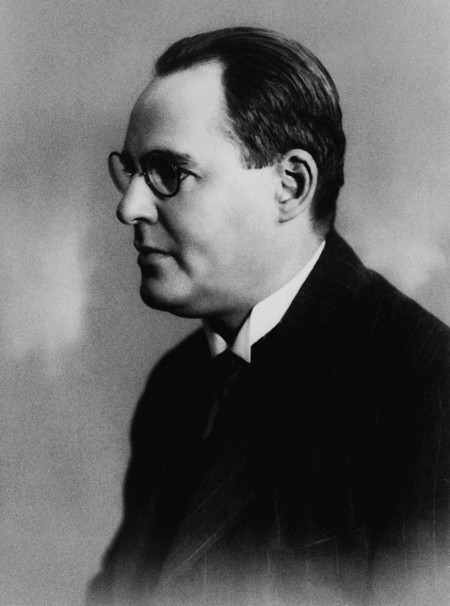
26 June 1878, Budapest – 3 April 1942, Budapest
Albert Siklós was a professor, musicologist and composer, educator of generations of musicians, creator of the literature of pedagogy of composing, music esthetics and music history. He was frequently referred to as the ‘Hungarian Riemann' by his contemporaries from the 1920s as an acknowledgement of his encyclopedic, versatile knowledge and the significance of his fundamental handbooks.
He studied music theory and cello at the Magyar Zeneiskola (Hungarian Music School) from 1891 and demonstrated successful development in both areas: he premiered his own Cello Concerto in 1896 with the orchestra of the school and appeared with his first symphony and an opera in one act written after Jókai titled Fulkó lovag (Fulkó Knight) the same year. He pursued composition studies in the class of Hans Koessler from the academic year of 1896/1897 to 1899 at the Academy of Music (he began immediately in the third year and then he repeated the fourth one voluntarily). Parallel to that he studied law at the University of Budapest. He changed his original name, Schönwald to Siklós sounding more Hungarian at the turn of the century. He was a cellist of the Philharmonic Society between 1901 and 1904, and then he became a teacher of music theory, composition, piano, esthetics and chamber music at the Fodor Music School from 1905 to 1919. He undertook an important role as a composer, too in the work of prosperity of the school that became famous: he composed nearly a hundred smaller piano works that were performed regularly at the student recitals as a part of the curriculum.
Siklós as a composer can be regarded as a follower of the German Romantic tradition, an influence of French music at the turn of the century can be felt at most in the harmonization, occasionally. He composed works in a variety of genres and for diverse performing apparatus; he created his works basically conservative in style with an unmatched technical preparedness. The results of his continuous work as a composer are indicated by compositions for orchestra, solo instruments, concertos, chamber works, songs and other vocal pieces. Following his attempt of composing an opera in his youth he returned to the world of the stage in the 1920s. His incidental music for the pantomime, A tükör (The Mirror) of Jenő Mohácsi was performed with success at the program of the Town Theater in 1922, and then he wrote an opera with the title A hónapok háza (The House of the Months) four years later, while in 1933 he was among the first in Hungary to compose the music of a radio drama with the title Eszterházi vigasságok (The Merriments of Eszterháza).
He achieved the most significant results of his activities in the fields of education and in connection with that in the studies in music theory. From the academic year of 1910/1911 he taught a series of theory courses at the Academy of Music until his death in the spring of 1942: orchestration, score reading and music theory first as a lecturer and then from 1913 as an ordinary professor. He also participated in the education of composition from 1916. At the beginning he was a substitute teacher to the ailing Viktor Herzfeld, he took over the second year class from 1917 and then from the academic year of 1919/1920 he taught as a full professor of music theory. Besides that he undertook teaching general and Hungarian music history and music esthetics, as well. Ferenc Farkas, Jenő Ádám, Ferenc Fricsay, Rudolf Maros and Endre Szervánszky belonged to his most outstanding students in composition.
As there was no literature in Hungarian of the subjects he taught he compensated for the lack of that by himself with his works provided with rich anthologies. His Zeneköltészettan (Music Poetry) was published between 1907 and 1913 (I. Harmony, II. Counterpoint, III. Form, IV-V. Instrumentation) that was considered to be the advanced and basic book for educating composition in the first half of the twentieth century, that was supplemented with his works titled A vezérkönyv-olvasás útmutatója (A Guide for Score Reading; 1911), A harmonizálás kézikönyve (A Handbook of Harmonization; 1923) and the Hangszerek-hangszínek (Instruments-Timbres; 1941). Further fruits of his work as a pedagogue were the Útmutató a zenediktáláshoz (A Guide for Music Dictation; 1913), Zeneesztétikai jegyzetek (Lecture Notes in Music Esthetics; 1921) and Magyar zenetörténeti jegyzetek (Lecture Notes in the Music History of Hungary; 1927). His scientific activities also served his objectives of his broad educating work, beyond his writings on music history he wrote several analytic studies, program notes, and gave more than a hundred lectures at the Szabad Egyetem (Open University) from 1932 (his famous series covered the topics of musical style analysis, musicology, orchestration, histories of the Italian opera and the symphony). Besides that he published a music lexicon in 1923, and was the editor of the periodical titled A Zene (Music) from 1928 during a decade.
G. L.


